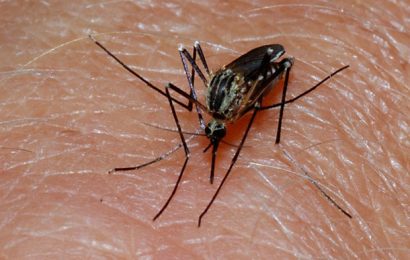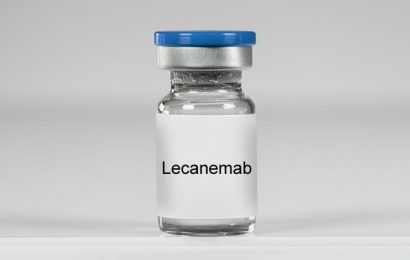MADRID — Experts in the field feel it, and evidence proves it: scabies (mange) has become a new “real-time” challenge for dermatologists, especially since the outbreak of the COVID-19 pandemic.
Yolanda Gilaberte, MD, PhD, president-elect of the Spanish Academy of Dermatology and Venereology (AEDV), spoke at the association’s 49th congress, which was held in Malaga from June 1 through 4. “Scabies has always been present in our consultations, but much less frequently than what we’re currently seeing,” she said. “There’s been exponential growth not only in cases but also in very difficult to treat conditions, which are perpetuated above all in the family nucleus.”
A study carried out by experts from the Carlos III Health Institute and led by the National Center for Epidemiology and the National Center for Tropical Medicine was published in November 2021. This investigation documented the upward trend in scabies cases since 2014 and their intensification during the pandemic.
In parallel, dermatologists have seen an increase in cases during this period. The situation was analyzed during the scabies session, “What Is Happening?” In this forum, specialists said that since the start of the COVID-19 health crisis, there has been an increase in cases in Spain and a decrease in the effectiveness of some treatments. This observation is in line with what is happening in other European countries.
Speaking to Medscape Spanish Edition, Eliseo Martínez, MD, PhD, said, “The number of cases has maintained an upward trend in the last decade, which has been especially accentuated during the last 2 years.” Martínez, coordinator of the AEDV’s Epidemiology and Health Promotion Group, added that “analysis of the incidence of this disease in Spain is complex, because there is currently no national scabies registry, since it is not a notifiable disease.”
The COVID-19 Link
Regarding the increase in incidence, Martínez feels that “it is too early to make a statement on the trend that this disease will follow in 2022; what can be determined is that more cases were diagnosed in 2021 than in 2020.
“Spanish doctors, specifically dermatologists, are making an effort to halt this trend, optimizing treatments to achieve maximum effectiveness from the get-go and promoting the prevention of new infections through information campaigns. However, scabies remains a frequent diagnosis in consultations,” Martínez added.
Regarding whether there is evidence that directly links this spike to the pandemic, Martínez commented that the precise reasons why there has been a marked increase in the number of cases since the start of the SARS-CoV-2 pandemic are not yet fully known, although there are several hypotheses.
First, during the confinement period, spending more time at home with relatives increases the risk of transmitting the parasite. Second, the increased difficulty in accessing medical care since the beginning of the pandemic could have delayed the diagnosis and treatment of patients with scabies. This delay would subsequently increase the load of parasites in affected patients, who would also have remained infected and would likely have transmitted the disease for longer periods.
Gilaberte pointed out that the role that the pandemic has played in this increase in cases needs to be further pinned down. “We do not know whether the conditions derived from the confinement favored the mites that cause the disease to become more resistant to treatment or whether the cause is that the therapeutic measures and options used to solve this problem were not properly implemented. It should be taken into account that it is necessary to subject clothes, furniture, etc to treatment, which is difficult in a family environment.
“Although we do not handle consistent incidence data, we know the amount of antiparasitic drugs for scabies that have been sold in the pharmacy recently, a figure that is significantly on the rise and that has increased exponentially together with the cases that we see in consultations,” added Gilaberte.
Furthermore, the specialist stressed, “The Spanish Academy of Dermatology and Venereology is conducting initiatives such as asking dermatologists to complete questionnaires on this disease. The objective is to solve a problem that is quite pressing at this time from a dermatological standpoint.”
Permethrin Less Effective?
The participants in this session highlighted the difficulties that arise regarding the approach to this disease. They alluded to therapeutic failures, especially in the case of permethrin, even when this treatment is administered according to the recommended guidelines.
Martínez observed that although recently published scientific articles point to a possible loss of efficacy of permethrin cream, coinciding with the impression that many dermatologists have in their daily practice, the available data are still not conclusive. Thus, permethrin remains one of the pillars of scabies treatment in most current cases.
“In addition to permethrin, there are other therapeutic options both topically, such as sulfur ointment, and orally, with ivermectin. The trend among dermatologists is to go towards the prescription of combined treatments, seeking to maximize therapeutic response,” said Martínez.
Cristina Galván, MD, dermatologist at the University Hospital of Móstoles in Madrid, commented during the session that scabies has never been the subject of special interest for research because it is an ectoparasitosis. Scabies is caused by a mite that does not invade past the epidermis; it is not an invasive germ, nor does it compromise internal organs. However, it produces great morbidity and seriously affects quality of life, since it prevents sleep. The constant scratching that it produces causes skin fractures that can subsequently lead to bacterial superinfection.
Regarding the identification of the disease, Galván pointed out that patients can be asymptomatic, and it is common for them to take a long time to see a specialist, “hence the importance of spreading the message that, at the slightest suspicion, a specialist should be consulted, since adequate and early treatment is the most effective strategy in curing the disease and preventing transmission to other people.”
Martínez stressed that it is important to highlight and eliminate some widespread hoaxes or false beliefs in relation to scabies, including the stigma linking it to poor hygiene habits. “Normal showers or baths don’t prevent contagion. Washing clothes used by people with scabies in the typical way does not eliminate the parasite either, since this requires a laundry cycle set at 60 degrees. Similarly, and despite having been one of the spaces in the spotlight when the increase in cases was reported, changing-rooms are not considered a transmission route for scabies.”
Spikes in Other Disorders
This session and the entire congress also addressed other skin diseases or disorders in which an increase directly or indirectly linked to COVID-19 has been detected.
“Given the situation of isolation experienced during the confinement, it was to be expected that both communicable diseases, such as scabies, and sexually transmitted infections would drastically decrease. However, the opposite has happened, from which it can be deduced that not everyone was confined in the same way,” said Galván.
In the case of sexually transmitted infections, according to epidemiologic surveillance data from the Carlos III Health Institute, syphilis cases increased by 132% during the period 2009 to 2019, the latest period for which data are available. Cases of gonorrhea increased fivefold in the same period. Gilaberte believes that this increase in sexually transmitted infections, constantly seen in medical consultations, is directly related to the reduction and relaxation of prophylactic measures among the population as a result of the effectiveness of HIV drugs.
On the other hand, Martínez said that in a way more or less similar to what happened with scabies, some skin manifestations have emerged or have worsened or increased. “As a result of the SARS-CoV-2 pandemic, some dermatological problems have become more common in medical consultations. Thus, we are witnessing many alterations caused or favored by the measures to prevent the transmission of COVID-19. For example, frequent and exhaustive cleaning of hands has promoted the appearance of eczema. Similarly, the use of masks has led to the worsening of problems such as acne, rosacea, or seborrheic dermatitis. We have also seen an increase in cases of telogenic effluvium in patients after a COVID-19 infection.”
Gilaberte, Martínez, and Galván have disclosed no relevant financial relationships.
Follow Carla Nieto of Medscape Spanish Edition on Twitter @carlanmartinez.
This article was translated from the Medscape Spanish edition.
Source: Read Full Article


